INSTITUTE OF PHILOSOPHY OF NATURE
Abstract
Analysis of orbital motion of an orbital body skips the correlation of orbital distances of all orbital bodies. If such a correlation exists and we ignore the same then we would be missing in our understanding the reality of our solar system. Thus, we assume the existence of a continuous orbit in the solar system even when the reality is the discrete nature of the orbit. This paper promotes the discrete nature of orbit and attempts to provide appropriate justification for the same. It also provides justification why the orbits are close to the ellipse, why the orbital distances are expanding order, and why the major axes of the ellipse of all orbital bodies of the central gravitating body are oriented in one direction. The newly identified celestial charge (non-electric charge) field has a great role in providing stability to orbital bodies.
Keywords: Atomic model, Atmospheric charge, Bode’s law, Celestial body.
Introduction
Every celestial body has an extra nuclear space structure which is associated with the nucleus due to mass-space attraction shown in Fig-1 [1]. Celestial body and its extra nuclear space structure form one integral system. When the celestial body moves, the extra nuclear space structure associated with the celestial body moves along with it and when the celestial body rotates the associated space structure also rotates along with it. The shape of the extranuclear space structure of a non-rotating celestial-body located in a uniform space density background is spherical (Fig.2).
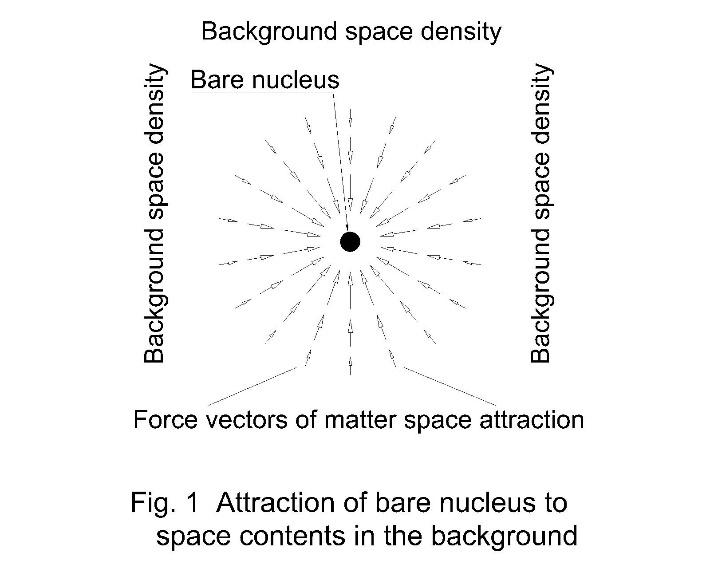
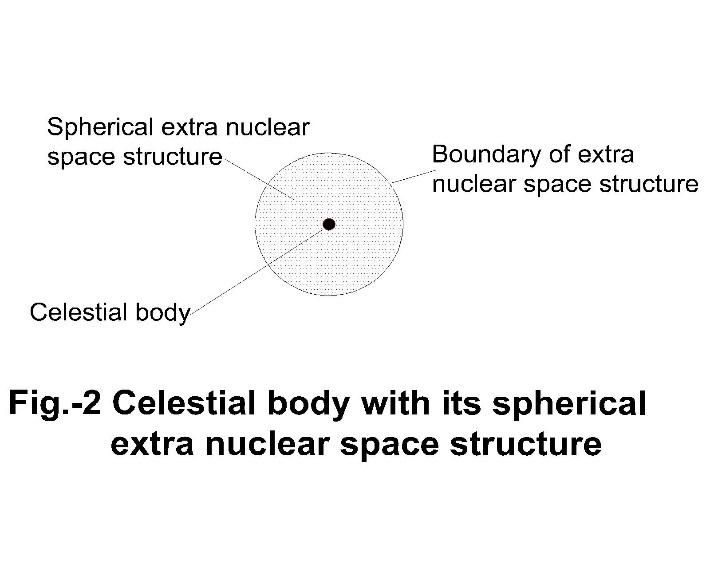
The size of the extranuclear space structure of a celestial body is a function of both mass of the celestial body and the space density of its background. This is like the size of a balloon depends on the mass of gas in it and the background pressure. The size of extra nuclear space structure in a background space density (ds) is shown in Fig- 3.a. But when the background space density is increased to (say, 2ds), the size of extra nuclear space structure is reduced (Fig- 3.b). For a given celestial body the size of extra nuclear space structure decreases with increase of background space density and increases with decrease of background space density. The background space density of a celestial body system (celestial body with extra nuclear space structure) is different in different directions due to the nature of space density structure of the nucleus celestial body. Therefore, the extra nuclear space structure of an orbital body is reduced at the near end of the nucleus celestial body and extended at the far end of the nucleus celestial body (Fig-3.c).
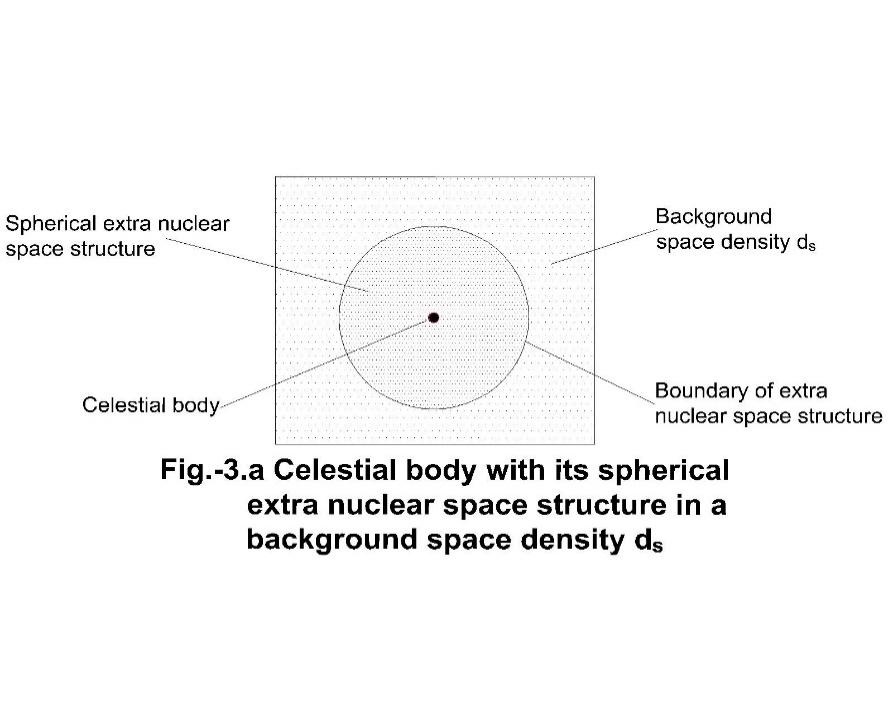
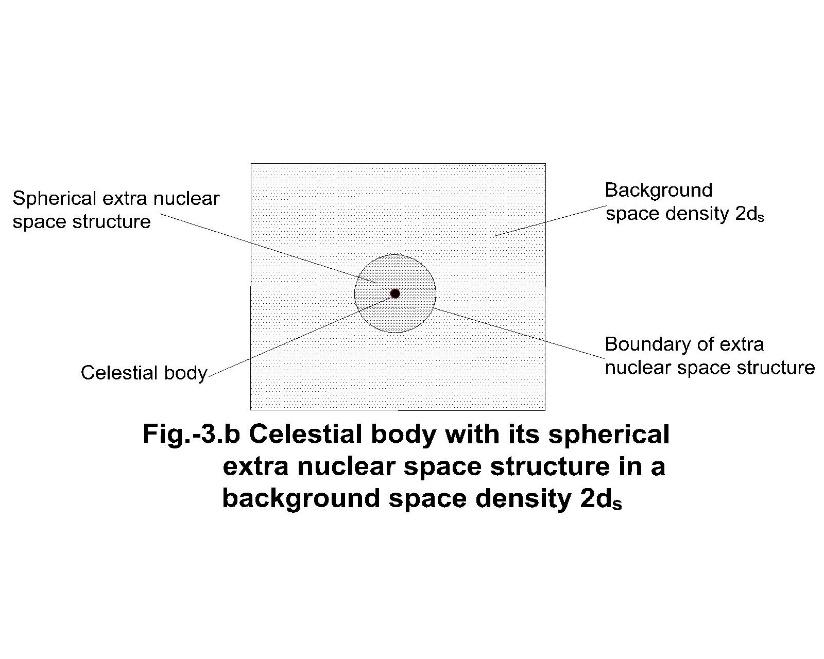
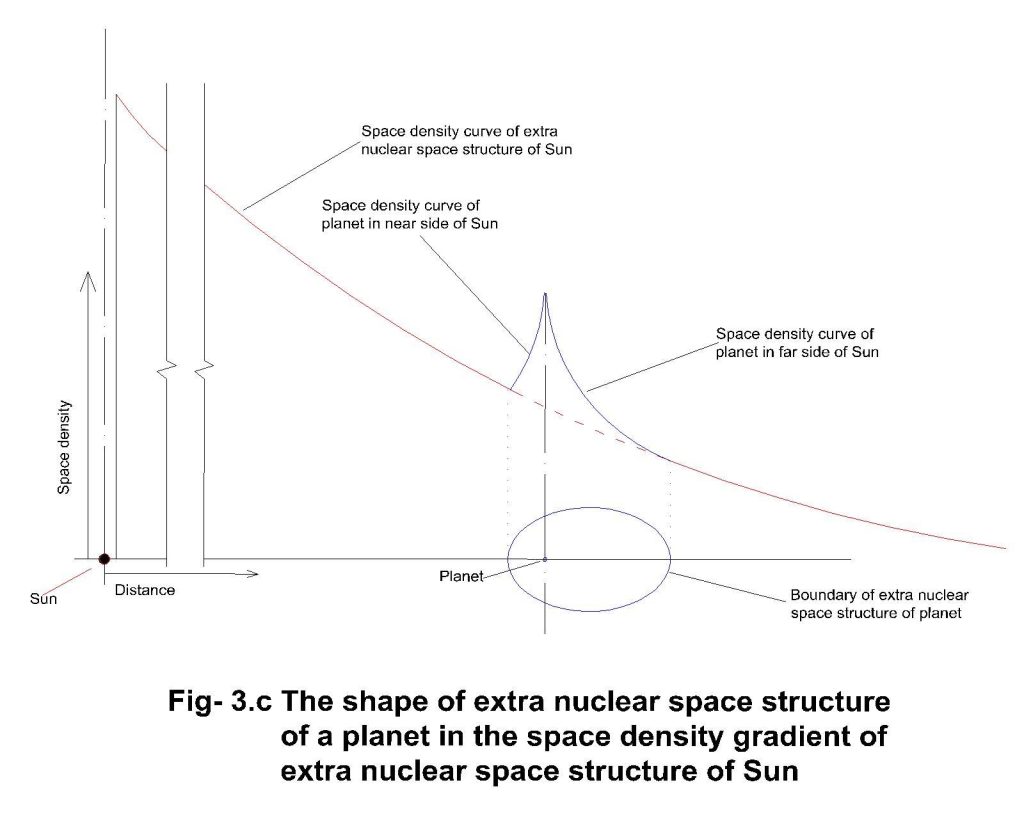
The extra nuclear space structure is not merely the structure described through space density variation. The space structure contains space matter particles in proportion to space density. Further, the space matter particles are in different states. According to a recent report the celestial bodies are charged bodies carrying non-electric charge where the crust is negatively charged and core is positively charged. The charge field produced by the core and the crust has a charge polarized structure. The space matter particles at different charge potential take part in organizing the charge polarized structure in the extra nuclear space structure of celestial body. Fig-4 shows the natural electric structure with alternate positively and negatively charged shells in the extranuclear space structure of the earth [2]. The charge shell feature is not confined only for the extra nuclear structure of the earth. Charge activities in the extranuclear space structure of other celestial bodies are also observed. The extra nuclear space structure of Halley’s Comet also shows the shell features. Thus, the existence of charge polarized shell structure is common to all celestial bodies. The schematic view of shell features of a celestial body is shown in Fig-5. The charge potential of the shell decreases outwardly causing an increase of shell spacing in outward direction. An orbital body remains in the floating state under equal and opposite centrifugal and centripetal (gravity) forces. The celestial bodies carrying celestial charge experiences local celestial charge interaction being placed in the celestial field. However, the charge field is zero at peaks of positive and negative potentials which makes the stability of orbital bodies at these locations. This result discrete orbit in solar system against the prevailing age-old concept of continuous orbit. Thus, Bode’s law appears to have a great significance in light of the above discrete nature of orbit. Bode’s law was not only a remarkable correlation for the distances of the planet known then but it was verified for Uranus and productive in predicting the discovery of asteroids. But the law doesn’t fit in for Neptune & Pluto and the satellites of planets. Astronomers dismissed Bode’s law due to the above limitation. This author has overcome the limitations of Bode’s law by visualizing the existence of sub-orbits of principal orbit and modified the correlation which works satisfactorily without any limitation. The above theoretical analysis on discrete nature of orbit justifies the discrete nature of placement of orbital bodies.
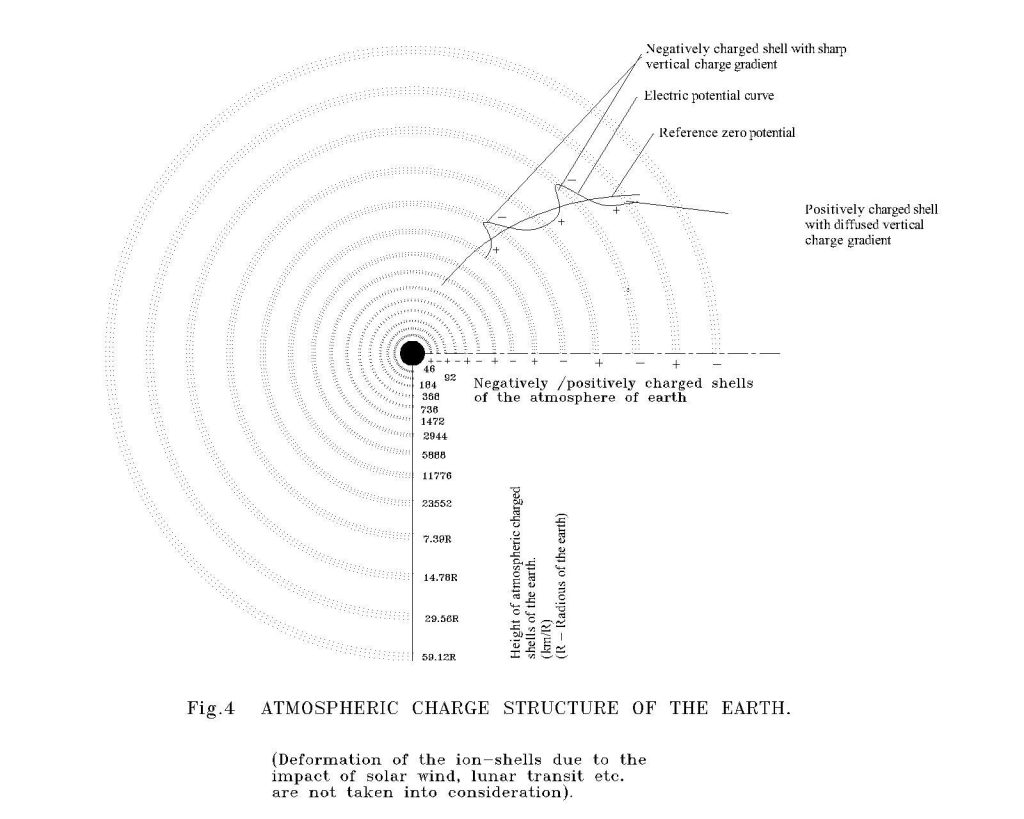

The charge field feature in extra nuclear space structure of an orbital body undergoes directional deformation when spherical extra nuclear space structure is deformed to ellipsoid shown in Fig-6. This makes the orbits to deform resembling close to ellipse. The above explanation justifies Kepler’s first law- The orbit of a planet is an ellipse with the Sun at one of the two foci.
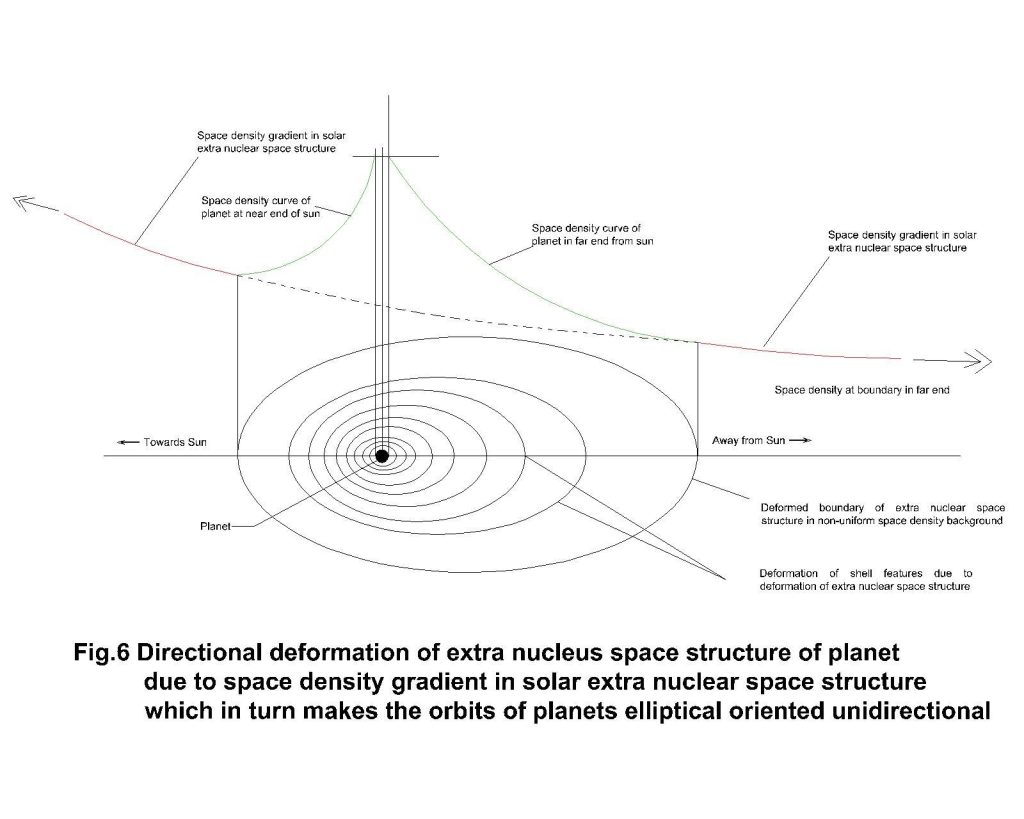
Conclusion
The uniformity of nature leads to similarity of structure and features in micro domain and macro domain. The realization of similarities between microcosm and macrocosm in Indian philosophy is based on uniformity of nature irrespective of domain. The discrete nature of orbit found in the solar system is a reality which can help to develop the atomic model close to reality.
